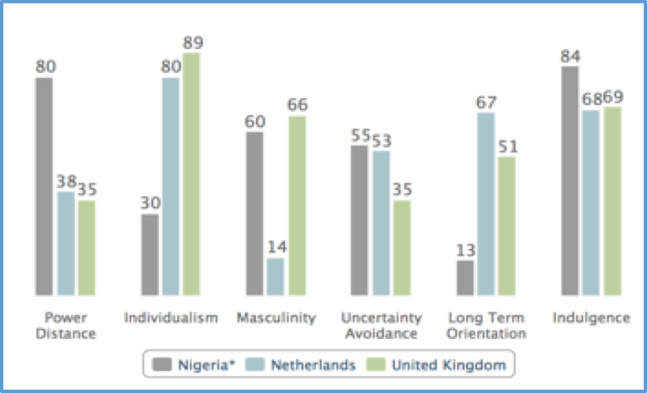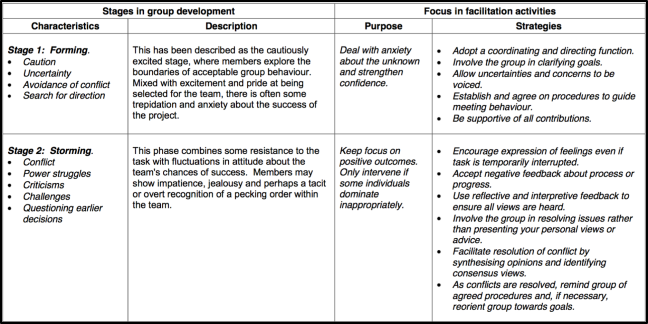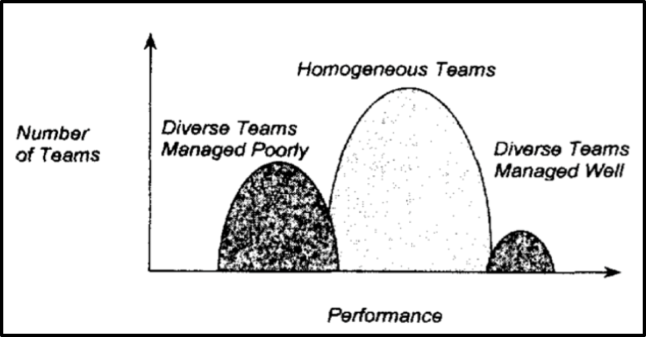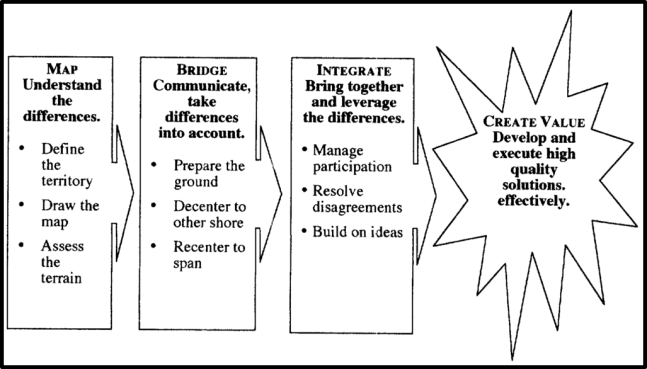“Research has consistently shown that diverse teams produce better results, provided they are well led. The ability to bring together people from different backgrounds, disciplines, cultures, and generations and leverage all they have to offer, therefore, is a must-have for leaders” (Ibarra and Hansen 2011: 71).
A diverse team may be described as different, varied, distinct etc. therefore, a group of people with a wide range of experiences, cultures, ideology, skills and opinions, (Saylor, 2009). Virtual Teams, are typical example of a diverse team. They function remotely, using modern day technology to establish (online) connection from different geographic locations. On the other hand, groups of two or more people, having similar credentials, background, perspectives and working towards shared and desired objectives are homogeneous teams, but not limited to teams in sports, host communities, business and professional associations and most probably co-located. (Caldicott, 2012).
The World is fast, becoming a global village, the sustenance of an organizational competitive advantage will depend on how well the Strategic capabilities, ‘what organisations have’ and ‘what organisations do well’, fully leveraged, make all the difference, in team performance delivery and to establish competitive edge. (Johnson, et al, 2014).
The four majors, the Royal Dutch Shell, Exxon Mobil, Chevron and BP, coincidentally, operate in different geographical locations, around the globe, this means that dealing with and resolving cultural differences or diversity issues, becomes imperative. Countries they operate in include, but not limited to Nigeria, Ghana, Angola, Nederland’s, United Kingdom and United States. Using the Hofstede Cultural dimension, in comparing Nigeria values with that of Netherland’s and the United Kingdom, Fig. 2 depicts the resulting plot of cultural differences. A good understanding of these varying cultural values, will promote the effectiveness in managing the diverse teams.

Fig 2 shows the six cultural dimensions’ overview, relative to the Netherlands and the United Kingdom is compared with the Nigerian cultural dimension to obtain its cultural drivers. The dimensions demonstrate the likelihood of behavioral pattern that may be attributed individuals from a particular country cultural influence. This outcome is further analysed in Table 1, below (Hofstede, 2001).
| Hofsede’s Cultural Dimensions | Plot outcome and analysis |
| Power Distance – Individuals in Nigeria are not equal. The dimensional score of 80 is high, hierarchical order is an accepted norm, subordinates expect to be told what to do and immediate supervisor has the last word. (Hofstede et al, 2010) | |
| Individualism – The score of 80 and 89 confirms that the Dutch and British are a highly Individualist and private people. The score of 30, categories Nigeria as a collectivistic society, where shame and loss of face are the consequence of an offence. (Hofstede et al, 2010) | |
| Masculinity – The high score of 60 and 66 by Nigeria and Britain respectively clearly indicates that Nigeria and Britain is Masculine society where managers are expected to be decisive and assertive, the emphasis is on equity, competition and performance and conflicts are resolved by fighting them out. (Hofstede et al, 2010) | |
| Uncertainty Avoidance – UK low score 35 means that as a nation will make the day as the presents itself. A score of 55 means that a clear preference is not established. (Hofstede et al, 2010) | |
| Long Term Orientation – A low score of 13 shows that Nigeria culture is normative instead of pragmatic. The UK and Nederland culture are more pragmatic (Hofstede et al, 2010) | |
| Indulgence – With a very high score of 84 shows that a lot of effort is required to restraint desires and impulses. Nigerian culture is said to be one of Indulgence. (Hofstede et al, 2010) | |
As part of Shell’s effort to demonstrate that diverse teams add more value to the bottom line, the Diversity and Inclusiveness effort was initiated (Shell, 2014). This effort was misconstrued as female gender focused because Shell was perceived a masculine organization, thus confirming Hofsede’s cultural plot outcome, for UK and Nigeria scores. The transitional evidence through forming, storming, norming to performing as asserted by Tuckman and Jensen (1977), Table 2A and 2B refers. Women participation, has risen significantly in top echelon of Shell leadership.
Tuchman and Jensen, (1997)

Table 2A

Table 2B
For example

 Shell operates in well over 70+ countries.
Shell operates in well over 70+ countries.
The primary challenge for diverse teams is the actual differences that make up the team, misunderstandings and stereotypes. Diverse teams tend to perform in either the low performing or high performing categories, while homogeneous teams perform in the average performing category, Fig 3. This corroborates Ibbrar’s et al

Maznevski, claims there are three important things that leaders must know and implement in order to build high performing diverse teams: mapping, bridging and integrating depicted in Fig 4 below.

Short coming of Hofstede’s Cultural Dimensions
Trompenaars, Hofstede’s a former student developed the seven dimensions of culture, five of the dimension measure relationships and two of them measure time Considering cultural differences in this way provides us an insight into how different people will work together and how it can be applied to creative teams (Hampden-Turner and Trompenaars, 2000, Trompenaars and Hampden-Turner, 2002)
References
Caldicott, M. (2012). Midnight Lunch: The 4 Phases of Team Collaboration Success from Thomas Edison’s Lab (1). Somerset, US: Wiley. Retrieved from http://www.ebrary.com
Saylor URL: http://www.saylor.org/bus208/#4.3.1 The Saylor Foundation Saylor.org Page 3 of 5
Schuman, S. (2010). J-B International Association of Facilitators : The Handbook for Working with Difficult Groups : How They Are Difficult, Why They Are Difficult and What You Can Do About It (1). Hoboken, US: Jossey-Bass. Retrieved from http://www.ebrary.com
Sacher, A. (2009). Organisation Climate and Managerial Effectiveness. Mumbai, IN: Himalaya Publishing House. Retrieved from http://www.ebrary.com
Forstenlechner, I. (Ed.). (2010). Team Performance Management, Volume 16, Issue 5 and 6 : Expats and Citizens : Managing Diverse Teams in the Middle East. Bradford, GBR: Emerald Group Publishing Ltd. Retrieved from http://www.ebrary.com
Shell, (2014) http://www.shell.co.uk/about-us/latest-news-and-features/2015-news-and-features/flying-the-flag-for-diversity.html
http://www.shell.com/careers/diversity-inclusion.html
http://www.shell.com/careers/life-at-shell/importance-of-innovation/meet-ceri-powell.html
Cultural Intelligence Centerhttps://www.youtube.com/watch?v=SqzUYll9Hfo https://youtu.be/SqzUYll9Hfo